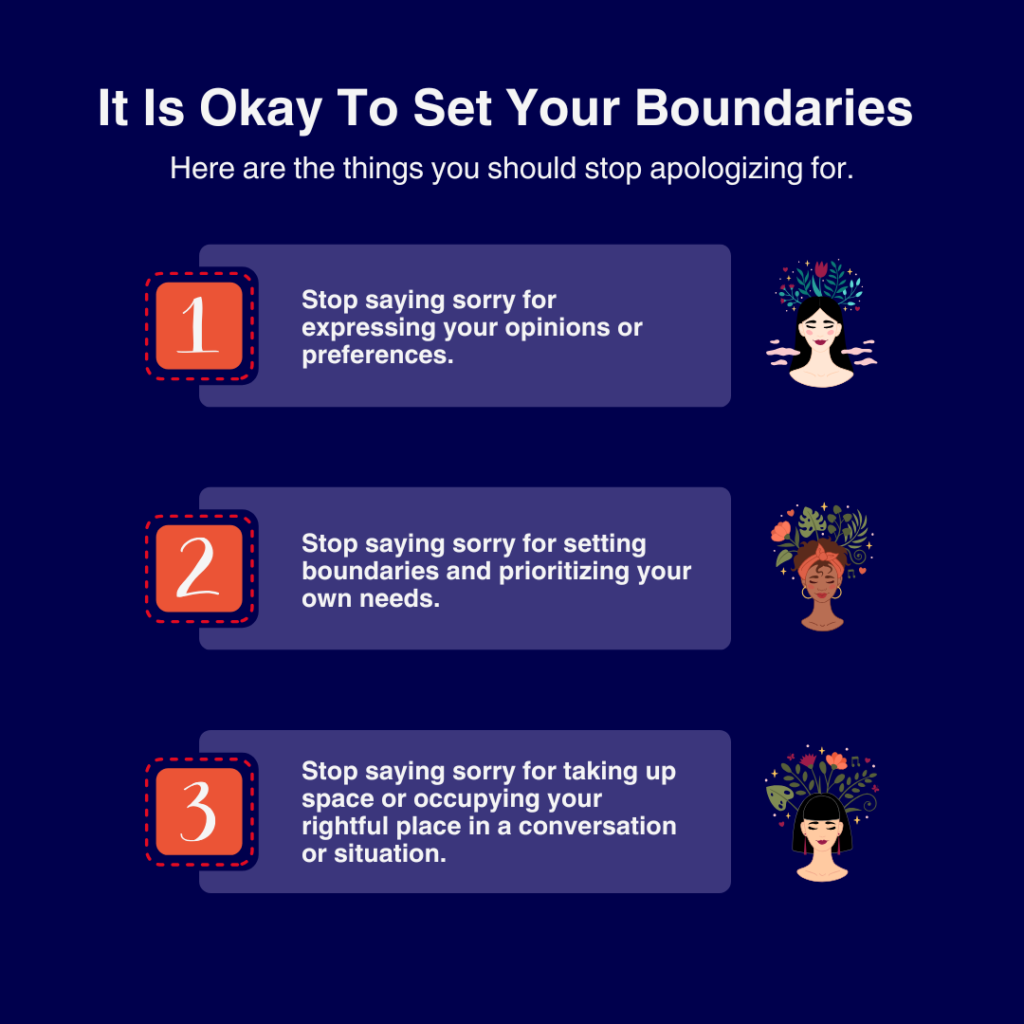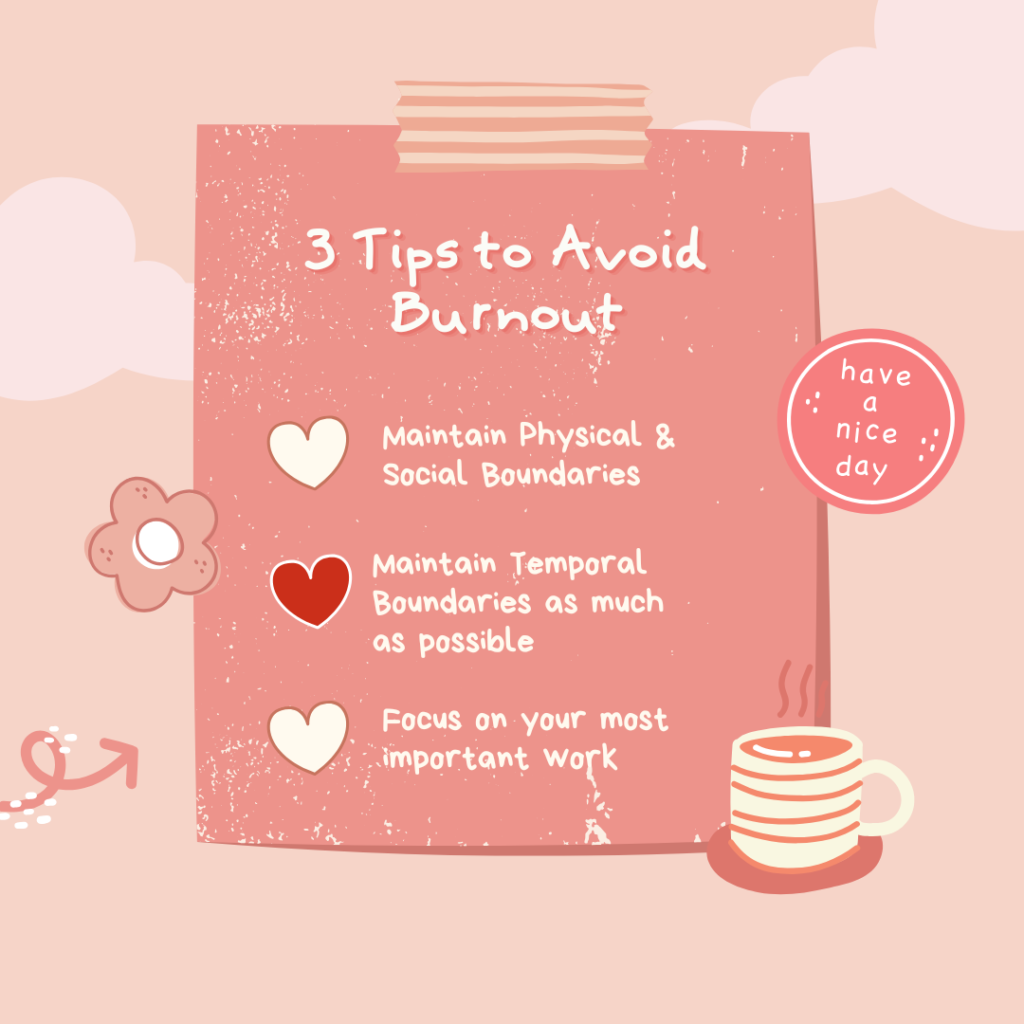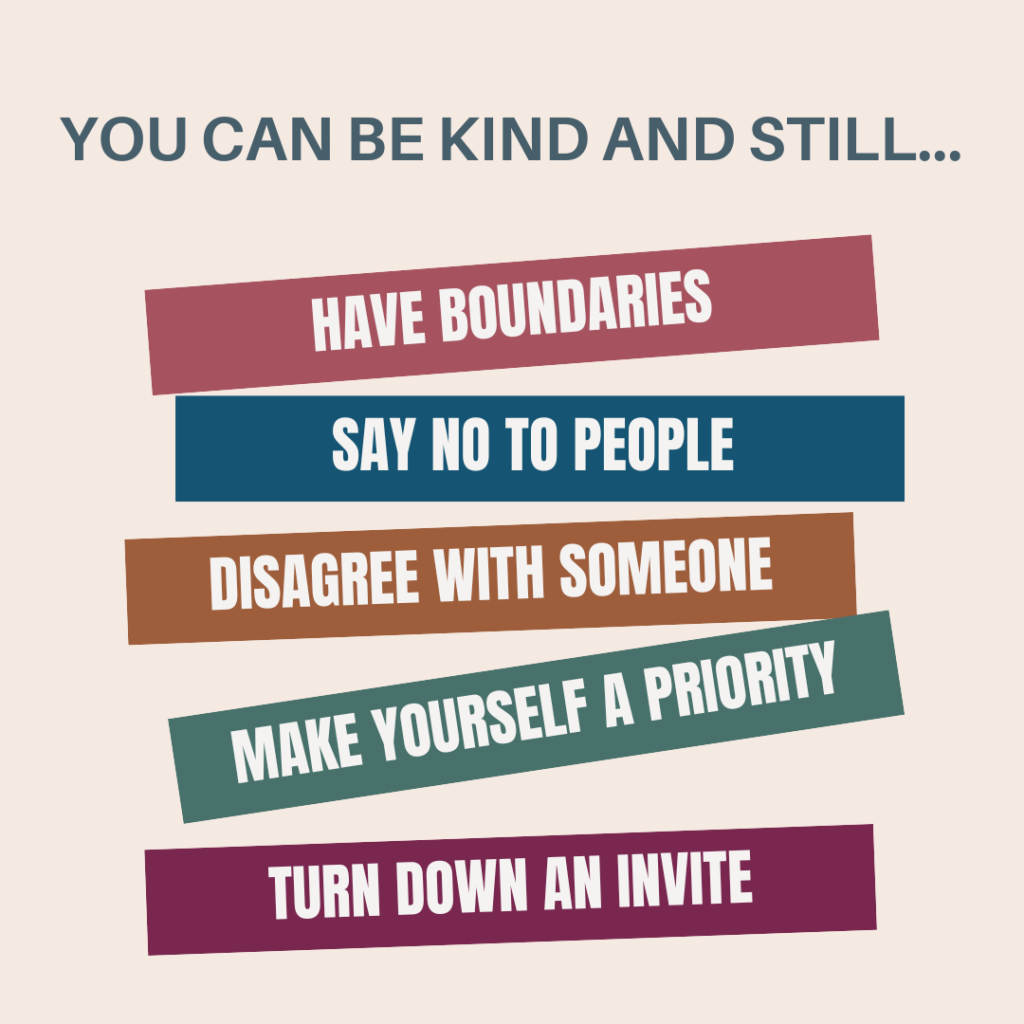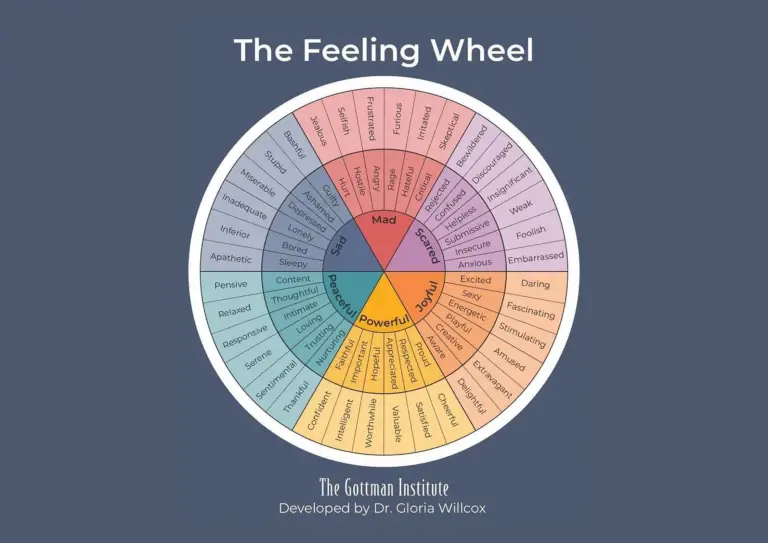Examples of Boundaries: 20 Clear Limits You Can Set Today
Examples of Boundaries: 20 Clear Limits You Can Set Today

Setting boundaries is part of any healthy relationship. ‘Boundaries are what is and is not okay with me.’ They help you protect your time, energy, and feelings.
Establishing healthy boundaries involves saying no to things you don’t want to do, expressing when someone hurts your feelings, and prioritizing time for yourself. These limits can apply to various areas of life, including work, friendships, and romantic relationships.
Setting boundaries is challenging, but it becomes easier with practice. Clear boundaries cultivate improved relationships and broadens your window of tolerance – allowing you to prioritize yourself while still being considerate of others.
Personal Boundaries

Personal boundaries are limits you set to protect your well-being. They help you decide what’s okay and not in your relationships. These boundaries can be physical, emotional, or mental.
Physical boundaries include your personal space. You might not want people to hug you without asking first. Or you may prefer to keep a certain distance when talking to others.
Emotional boundaries are about your feelings. You have the right to say no when uncomfortable with something. It’s okay to tell someone if their words hurt you.
Mental boundaries involve your thoughts and beliefs. You don’t have to agree with everyone. It’s okay to have your own opinions and ideas.
Here are some examples of personal boundaries:
- Saying no to extra work when you’re already busy
- Asking for space when you need space
- Telling a friend you can’t lend them money
- Not answering work calls after hours
Setting boundaries can be difficult at first, but it gets easier with practice. Remember, self-care is not selfish.
Boundaries in Relationships

Boundaries are fundamental to healthy relationships. They help create safety within the relationship (remember, clear is kind). You and your partner should discuss what you are and are not okay with.
Some healthy examples of boundaries include:
- Asking before making big decisions
- Setting limits on family interactions
- Giving each other space when needed
It’s important to be clear about your needs. You can say things like, “I need some space,” or “Please talk to me before making big financial decisions.”
Healthy boundaries come from love and a desire to grow together. They are not about controlling your partner. They are intended to help you feel comfortable and secure in the relationship.
Your values matter. Don’t change your beliefs just because someone pressures you. It’s okay to have different opinions and interests from your partner.
Good boundaries can help with:
- Better communication
- More trust
- Less conflict
- Stronger sense of self
Setting boundaries takes practice. Be patient with yourself and your partner as you learn. It’s a skill that strengthens over time.
Boundaries at Work

Setting boundaries at work helps prevent burnout and cultivate work-life balance. Let’s look at some common examples of boundaries around work and try to set them.
Time boundaries: Decide when you’ll start and end your workday. Set clear hours for when you’re available. This helps you avoid burnout.
Task boundaries: Know what’s in your job description. Don’t take on extra work that’s not your responsibility. It’s okay to say no to tasks that aren’t part of your role.
Communication boundaries: Choose how and when you’ll respond to work messages. For example, you might decide not to answer emails after 6 p.m. or on weekends.
Personal space boundaries: If you share an office, respect others’ space. Ask before borrowing items and be mindful of how you keep the space.
Emotional boundaries: Avoid sharing too much personal info or getting involved in office gossip.
Here are some ways to set boundaries:
- Be clear and direct
- Use “I” statements
- Stay calm and polite
- Be consistent
Good boundaries at work can create a healthy culture – vital for our mental well-being.
Boundaries with Friends and Social Circles

Setting boundaries with friends is pivotal for healthy relationships. You need to decide what’s okay and not in your friendships.
One important boundary is respecting your personal space and time. It’s okay to say no to hangouts when you need alone time – you have to fill your cup first!
Another boundary concerns sharing personal information. You get to choose what you tell friends and what you keep private.
Avoid friends who always compete or start drama. Good friends support each other and lift each other.
Set limits on favors and lending money. It’s okay to help, but don’t get caught up in being the caretaker.
Be clear about your values. If a friend asks you to do something that feels wrong, saying no is okay.
Online boundaries matter, too. You can keep social media profiles private or limit what you share with certain people.
You can change your boundaries as needed. What works for one friend might not work for another.
Speak up when a line is crossed. Good friends will respect your limits when you express them clearly.
Wrap-Up
Setting good boundaries helps you care for yourself. It allows you to say no to things that don’t work for you. You can set limits on your time, energy, and personal space.
Try writing down a few boundary ideas and practicing saying them out loud. Start small with easy boundaries first. You might feel nervous at first, but it gets easier with time.
Healthy boundaries are about respect. They help build better relationships with others. You teach people how to treat you by setting clear limits.
Be kind but firm when explaining your boundaries. Most people will understand, but those who don’t may not be good for you. Your needs matter, too.
Keep working on your boundaries. They may change over time as your life changes, and that’s okay. The goal is to create clear lines that protect your well-being.
You’ve got this! With practice, setting boundaries becomes natural. It helps you feel less stressed and brings more joy into your life! Try it on!

Frequently asked Questions
Setting boundaries is fundamental for healthy relationships. Let’s explore some common examples of boundaries.
What are some examples of boundaries to set in a romantic relationship?
In a romantic relationship, you might set boundaries around personal space and time. For example, you could agree to have one night a week for solo activities.
You might also set boundaries around communication styles. This could include asking your partner not to yell during arguments.
Can you provide examples of boundaries one might establish in their personal life?
Personal boundaries can cover many areas. For example, you might set a boundary around your personal time by not answering work emails after 6 p.m.
Another example is limiting your sharing on social media or with your friends and family. You can decide not to post or discuss specific topics or aspects of your life.
What could be considered healthy boundaries to have with friends?
You might set limits on how often you socialize. For example, you could tell friends you’re only available for outings once a week.
How might family dynamics change when implementing personal boundaries?
When you set boundaries with your family, some members might initially feel upset. For example, if you decide not to attend every family event, some relatives may need time to adjust.
You might also see positive changes. Setting clear boundaries can lead to more respectful communication and less conflict.
What are the characteristics of healthy versus unhealthy boundaries?
Healthy boundaries are flexible and allow for give-and-take. They protect your well-being while still allowing for close relationships. Boundaries have a way in, not a wall.
Unhealthy boundaries might be too rigid or too weak. Overly rigid boundaries can push people away, while weak ones may leave you feeling drained or taken advantage of.
Which simple personal boundaries can someone start with to improve their well-being?
A simple boundary is learning to say “no” to requests that don’t align with your priorities. This helps protect your time and energy.
Another easy boundary is setting limits on your phone use. For example, you might decide to turn off notifications during certain hours or while spending time with loved ones.
About the Author
Taylor O’Horo, Psychology Major.

Hello friends! I’m Taylor O’Horo, marketing coordinator and biofeedback technician. I’m a mom to three kiddos, wife of a first responder, and a veteran spouse. I earned my bachelor’s degree in psychology from Arizona State University and plan to pursue a master’s in counseling. Everyone has a story, and mine is no different. Overcoming the adversities I’ve faced has taught me about resilience and how to support others. I believe that all humans have the capacity to heal! You are worth it!






